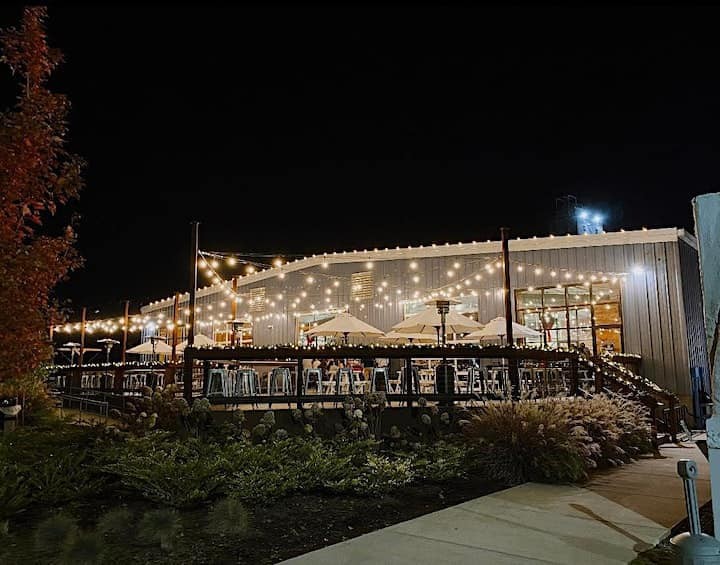We caught up with the brilliant and insightful Hopper Seely a few weeks ago and have shared our conversation below.
Hopper, thanks for joining us, excited to have you contributing your stories and insights. What was the most important lesson/experience you had in a job that has helped you as a business owner?
I used to work graveyard shift at a wine & spirits distribution warehouse. There we would load trucks with hundreds and thousands of cases of wine and random liquor from 5:00 in the afternoon to 5:00 in the morning. I was always tired, but I would always do my best to get the trucks loaded perfectly and efficiently to improve our loading times. I was the low man on the totem pole so there wasn’t much I could do. The faster we were able to load the trucks the shorter the shift would be. I needed the hours, but I felt that there was a better way to load the trucks. After months and months of trying to change things, my co workers grouped up with me and we were able to cut loading times by 15%. Unfortunately the loading manager noticed and pulled me to the side. He looked at me and said “slow down cowboy, the more time loading the better we all will be”. I was conflicted because I know we all needed more hours, but I knew that being slow was not the way to do it. We all hated loading trucks, but what if that is the only way we get to stay on the clock?
I went to warehouse manager and we discussed a plan to shorten hours on loading trucks, but replacing hours loading with optional inventory work. Yeah it sucked doing inventory after loading trucks for 8 hours, but it was better than 12 and if you wanted more time on the clock, you could choose to do inventory. It doesn’t seem like a big deal, but I was a senior in high school when I was working there and this moment helped me see both sides. Yes people need more hours for work, but there are better ways of getting it other than slowing down operations. At the end, a few of the participating warehouse employees became managers and one even went on to become the sales director for the company. I was promoted to a management spot, but for some reason that moment was one of the most important work moments of my life. I became close to the owner of the distributor and he eventually helped me personally build the business plan for Grind City Brewing Company.


Hopper, love having you share your insights with us. Before we ask you more questions, maybe you can take a moment to introduce yourself to our readers who might have missed our earlier conversations?
My name is Hopper Seely and I am the President and Founder of Grind City Brewing Company. I have been brewing beer since I was 13 years old. My father and I used to brew on weekends at home. I fell in love with the process of brewing and I continued doing so from middle school through high school. After graduating high school and a small amount of time at traditional college, I transferred to a BrewLab in Sunderland, England where I earned my diploma in British Brewing Technology. I worked at 9 breweries in England and then another 3 in the USA before starting Grind City Brewing Company.

We’d really appreciate if you could talk to us about how you figured out the manufacturing process.
We brew, ferment, filter, and package all of our beer on site. When we got our equipment installed, the manufacturer sent a team to train us on their equipment. My team and I already knew how to brew, but every new piece of equipment has it’s own features that were just out of our league at the time.
If you could have had a problem, we did! Oh boy the work day would start at 5:00 in the morning and we wouldn’t leave until midnight. This lasted about 2 weeks. We ALWAYS had a problem every hour. After the two weeks though we were able to get the equipment dialed in and started to actually produce product to sell.
We have a saying around here. Who do you want to be in a fox hole with? Those 2 weeks were long and stressful, but we did it. You don’t know who will fight alongside you when the going gets tough, but luckily our team only became stronger afterwords.

Can you tell us about a time you’ve had to pivot?
The pandemic changed logistics and production forever. One of the things that changed was the supply of aluminum. We package our beer into cans, and getting cans was becoming to become challenging and expensive. For a good bit of time, if you bought a beer from us, we were not making any profit. The costs to produce and package beer soared so we did a reset internally.
What started as a conversation of getting better margins turned into how do we bring our branding together. We had really cool cans, but not a cohesive branding across the cans. So we pivoted from 12oz pre wrapped labeled cans to 16oz bulk white label cans. It all stemmed from needing better margins, but turned into discovering what we really wanted to be.

Contact Info:
- Website: www.grindcitybrew.com
- Instagram: grindcitybrew
- Facebook: Grind City Brewing Company


